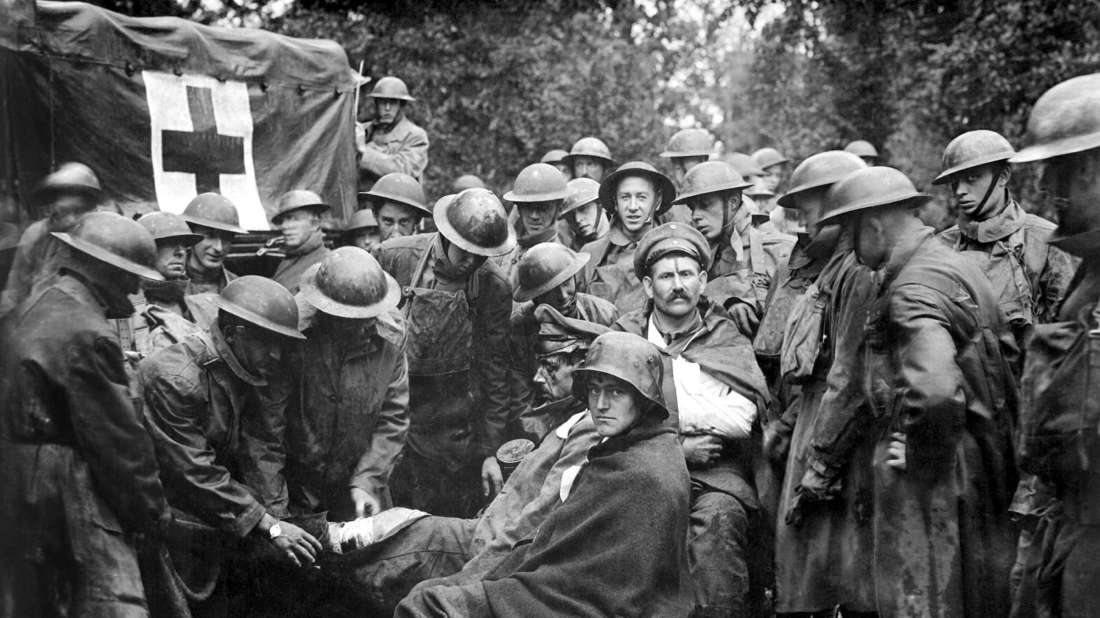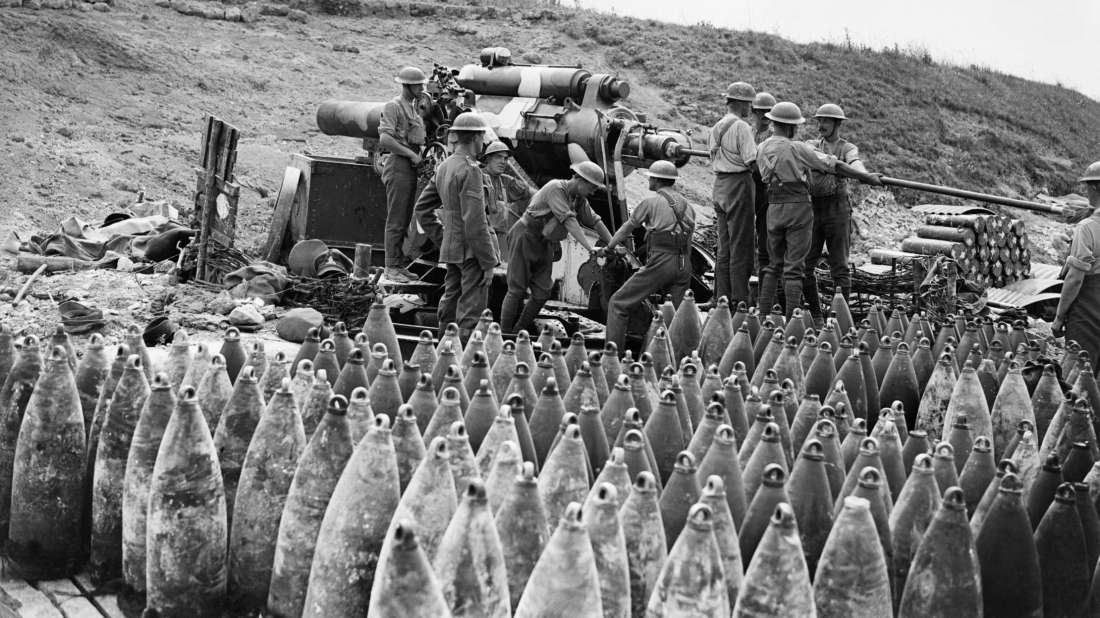Both Sides Plan to Fight in 1919.
Germans Fall Back, Their Defenses Broken.
Allies Need Millions More Soldiers from U.S.
Special to The Great War Project.
(22 October) France and the United States are making plans for shipping enough American soldiers and munitions across the Atlantic for a campaign to defeat Germany but not until the end of 1919 or in early 1920.
So reports historian Martin Gilbert. “They agreed to an accelerated shipping plan throughout the winter of 1918.” That way by the following summer they would have enough supplies for a major offensive.

Wounded German soldier with Americans
The agreement between France and the U.S. “held out the hope of a considerable military advance in the early months of 1919.” The troops under the American commander, General John J. Pershing, struggle to regain the initiative lost just days before on the Meuse River.
Pershing too is planning what is needed for a successful and decisive offensive on the Western Front in 1919.
According to historian Gilbert, “The number of men involved, most of whom would be transported across the Atlantic in British ships, was 3,360,000, two million more than he had already.
Meanwhile in mid-October of 1918, the political and military leaders of Germany are studying the peace note issued by the American president Woodrow Wilson.

Allied artillery unit.
Wilson wants Germany to evacuate key occupied territory, including all of Belgium and the disputed territory of Alsace-Lorraine.
Germany and Austria say no, “this would make an end of our capacity for defense,”, and thus put ourselves at the enemy’s mercy.”
On October 8th Wilson rejects the German response to his peace offering. He in turn counters that “a first condition of an armistice was the evacuation of all occupied territories. The war would not end until there were no German troops on Belgian or French soil.”
And no German or Austrian troops in Serbia.
On October 8th a century ago, the British launch a new offensive on a twenty-mile front line. They quickly take 10,000 prisoners and 150 guns. In twenty-four hours, Germany’s key defense, the Hindenburg line, is finally overrun in its entirety.”

American soldiers who fell during the Allied assault on the Hindenburg Line.
Germany’s defenses are collapsing. Reports historian Gilbert: “Battlefields from which the British had been driven in 1914 and 1915, and again earlier in 1918, were entered and crossed almost without pause. Every nation in the Allied line was moving forward.”
“On October 10th the American First Army under Pershing finally succeeded in driving the Germans out of the Argonne Forest.” But there was not satisfaction for the Americans as they had hoped.
“Ammunition, food, and other essential provisions were still being held up by the congestion on the roads.” The shortage of at least 100,000 horses was another serious obstacle.
But Pershing and his First Army fight on. “They were not going to dissolve themselves, or accept that they were beaten by the problems of supply.”

American soldiers and the assault on the German Hindenburg Line.
Meanwhile on October 11th “German forces began a systematic withdrawal from the Western Front. But they are not giving up the fight, not just yet.

https://bit.ly/2zb6eVo
Mike, I just saw this charming article about the Salvation Army making doughnuts for the U.S. soldiers. They claim that the term “doughboy” originated through this effort.
Bob Stein